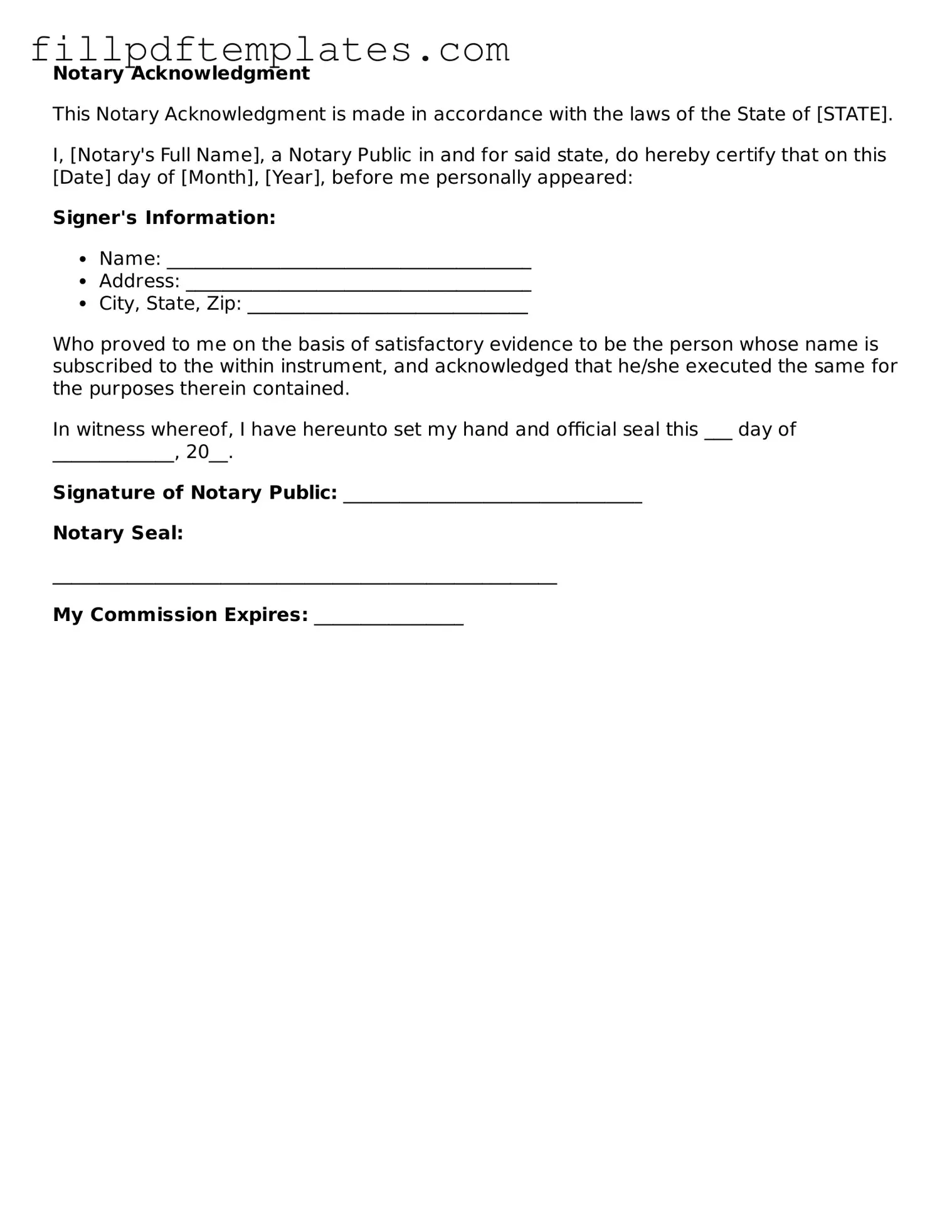Valid Notary Acknowledgement Form
A Notary Acknowledgment form is a legal document that verifies the identity of individuals signing a document and confirms that they did so willingly. This form serves as a critical step in ensuring the authenticity and integrity of various legal transactions. To ensure your documents are properly acknowledged, consider filling out the form by clicking the button below.
Get Form
